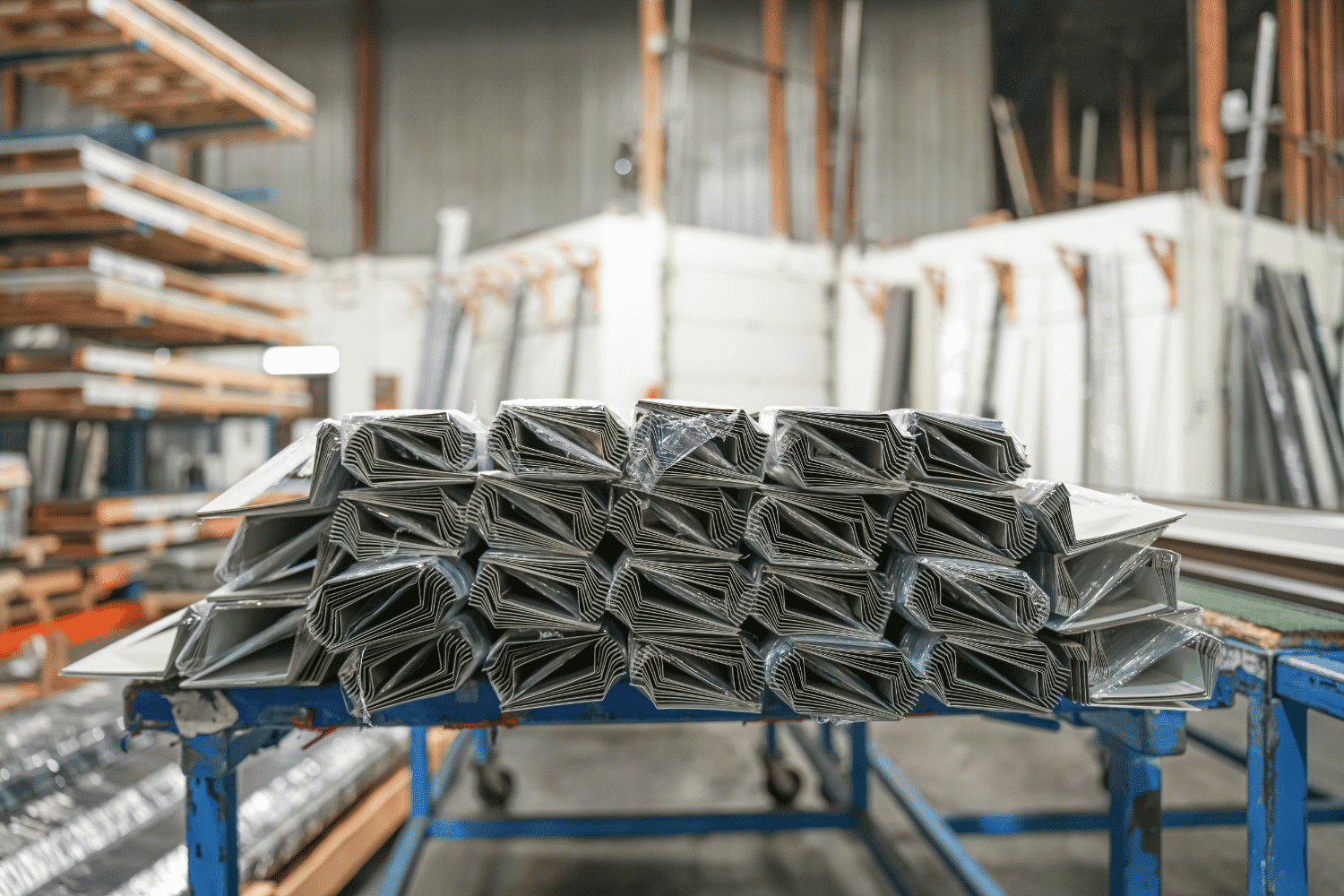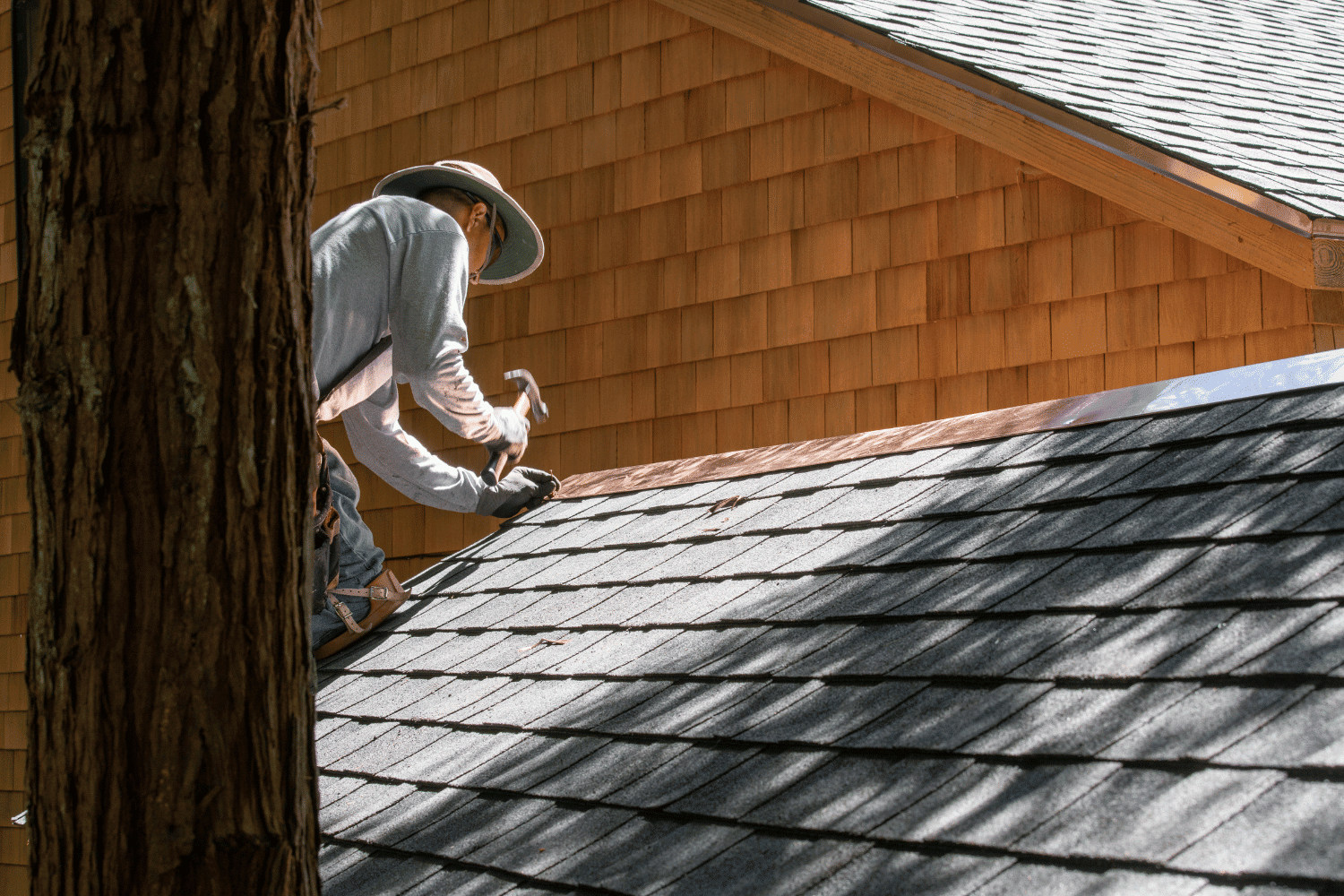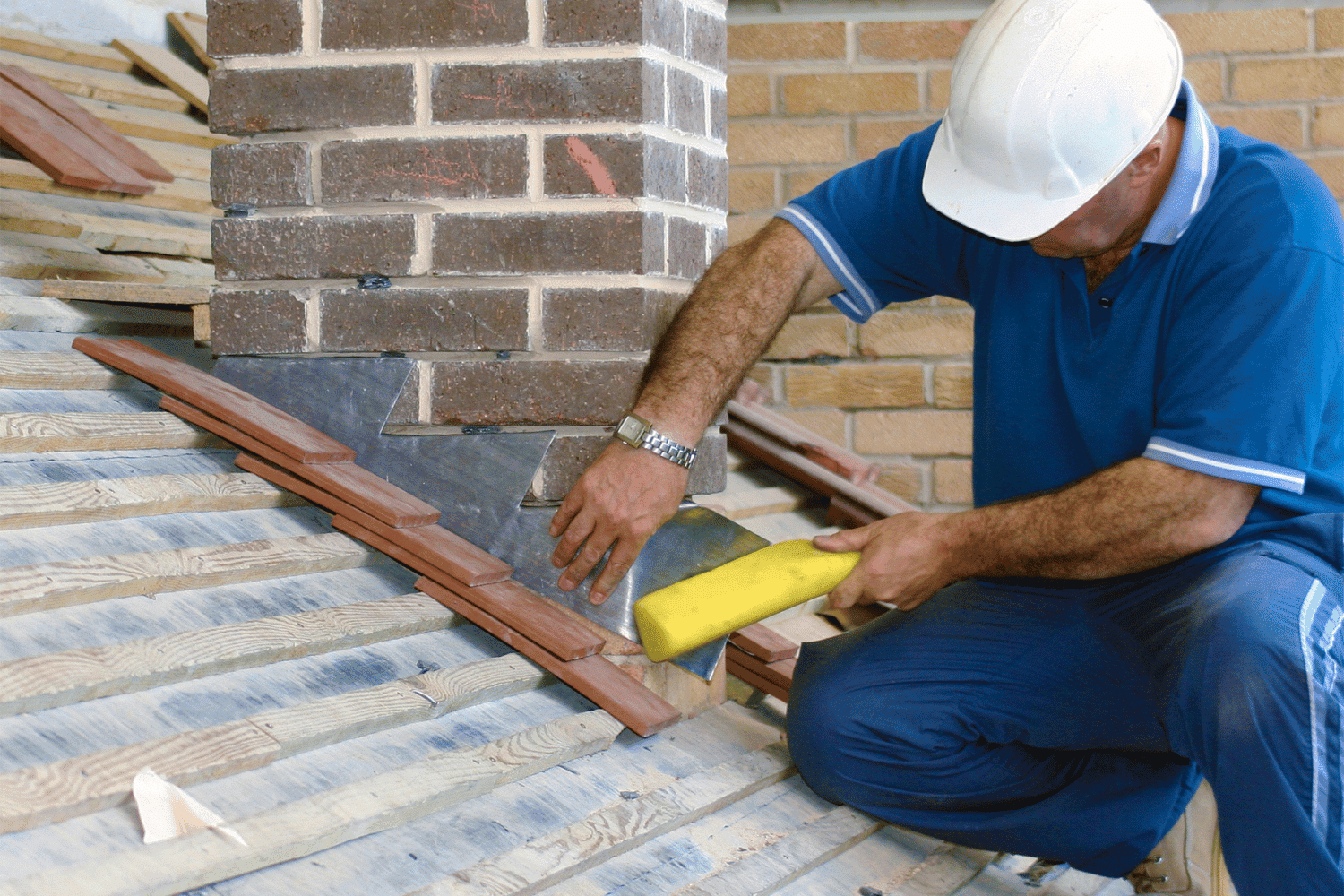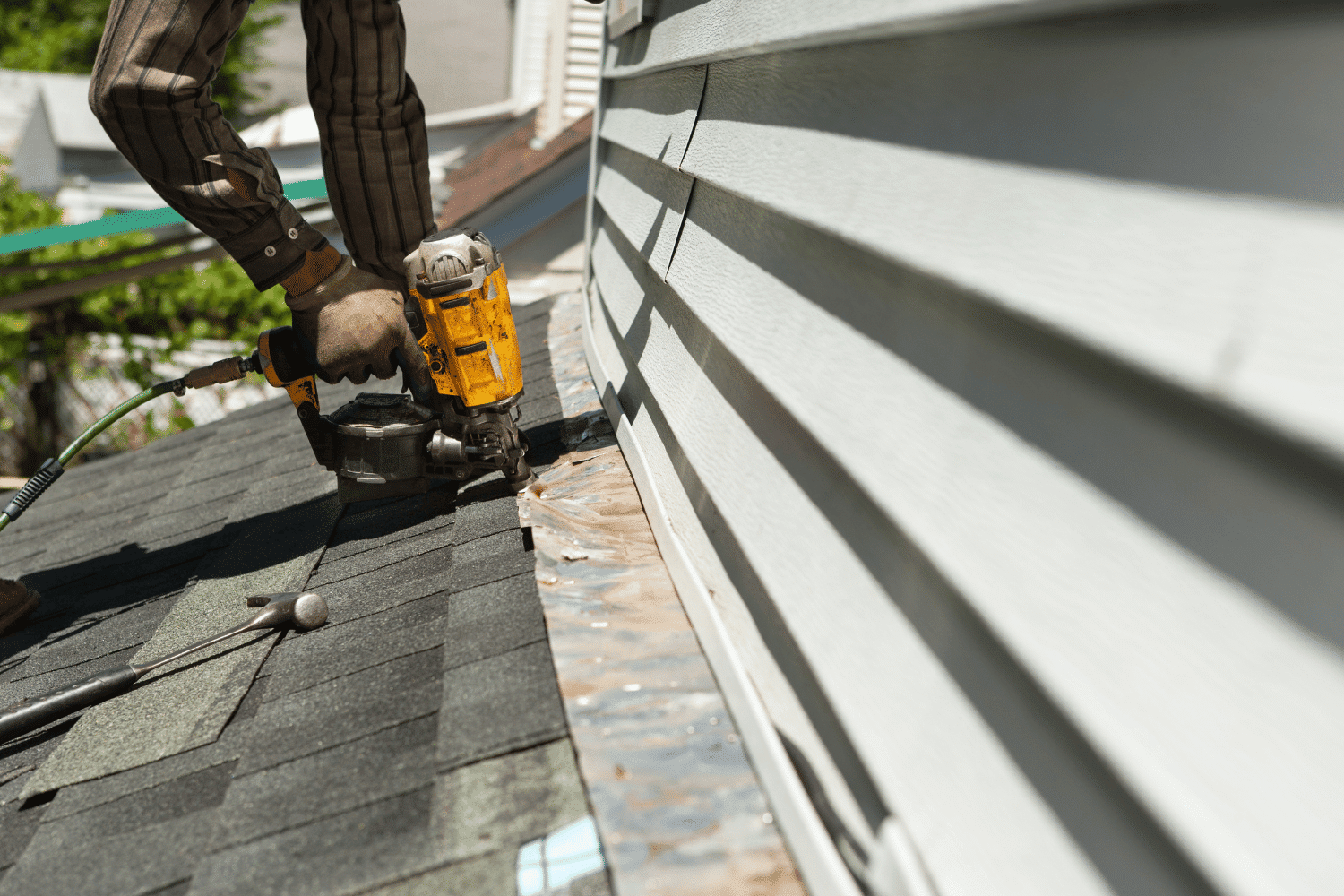What Is Roof Flashing & Why Is It Important?
What is roof flashing? Roof flashing is an essential component in any roofing system, designed to prevent water damage by channeling water away from critical areas of your home. It is typically made of metal and strategically installed to seal and protect the joints and intersections on your roof where water is most likely to penetrate. In this article, we’ll explore the different types of roof flashing, their purposes, and why regular maintenance is crucial for protecting the integrity of your roof.
Key Takeaways
-
Roof flashing is critical for diverting water away from vulnerable areas of the roof, preventing leaks and water damage, with regular inspection and maintenance being essential for its effectiveness.
-
There are various types of roof flashing, such as step, counter, and apron flashing, each designed for specific roof areas to prevent water infiltration and ensure the roofing system’s longevity.
-
Choosing the right material for roof flashing is crucial, with metals like aluminum, copper, and steel being preferred for their durability and resistance to the elements; professional installation ensures quality and safety.
The Role of Roof Flashing in Protecting Your Home

Roof flashing is a small but mighty component of your roofing system. Made typically of metal, it serves as a protective barrier that diverts water away from the vulnerable areas of your roof. These vulnerable areas include intersections between the roof surfaces, points where vertical walls meet the roof, and around fixtures like vents and chimneys. Flashing safeguards these critical junctions, playing a decisive role in preventing leaks and water damage.
However, like any superhero, roof flashing can also experience wear and tear. Inadequate or aging roof flashing can lead to a host of serious problems, including a roof flashing leak, which may cause:
-
mold
-
algae growth
-
pest intrusion
-
reduced thermal efficiency of your home, leading to higher energy costs
Therefore, regular inspection and maintenance of your roof flashing are crucial to ensure its optimal performance and longevity.
The Anatomy of Roof Flashing: Types and Purposes

Roof flashing is not a one-size-fits-all solution. It comes in several types, each designed for a specific area or function on your roof. The three most common types of roof flashing are:
-
Counter flashing: used to cover a surface where a vertical wall meets the roof
-
Step flashing: installed on the edges of roof shingles
-
Apron flashing: placed at the bottom of a sloped roof
Each of these plays a critical role in preventing water infiltration and ensuring the longevity of your roofing system.
In the following sections, we will delve deeper into these types of flashing, including continuous flashing, and their specific purposes.
Step Flashing: Guarding Against Water Penetration
Step flashing is the unsung hero that guards the joints between your roof plane and vertical walls. Used alongside shingles, it forms an important barrier against water penetration, ensuring a proper seal and providing extra waterproofing at these critical points. This barrier is crucial, especially at points where your home’s vertical walls intersect with the roof deck, preventing water from entering the joint and causing damage.
For step flashing to be effective, it needs to be of a certain size. Step flashing pieces should measure 10 inches in length and be at least 2 inches wider than the shingle exposure. This ensures effective water protection and proper installation. This ensures that the flashing fully covers the joint, providing maximum protection against water infiltration.
Counter Flashing: The Shield for Step Flashing
Counter flashing is like the shield for step flashing. Installed above step flashing, it offers an additional barrier against water infiltration by covering the top of the step flashing. This double layer of protection is particularly vital for brick or masonry walls that intersect with the roof, as it seals the top edges of the step flashing to prevent water from entering behind the flashing and into the structure.
Around features like chimneys, the combination of counter and step flashing is essential. It maintains a watertight seal where the chimney meets the roof, preventing leakage into the home. Without such protection, your home could be vulnerable to water damage, especially during heavy rain or snowfall.
Apron Flashing: Sealing the Interface of Roof Features
Apron flashing plays a crucial role in sealing around roof features like chimneys and skylights. It’s designed to prevent leaks, ensuring that your home remains dry and damage-free even during the harshest weather conditions. Specialized forms of apron flashing, such as electrical mast flashings, provide a weatherproof seal around the electrical service entrance mast, further enhancing the protection of your home.
Apron flashings are typically made from aluminum or EPDM rubber due to their weatherproof properties. When it comes to chimneys, it’s best practice to install the flashing concurrently with the brick and mortar work. This ensures a seamless and leak-proof integration, providing optimal protection for your home.
Selecting the Right Material for Your Roof’s Flashing

Choosing the right roofing material for your roof flashing is more than just a matter of aesthetics. The material you choose should be durable, able to withstand exposure to the elements, and compatible with the rest of your roofing system. Aluminum, copper, and steel are the most common metals used in roof flashing due to their durability, availability, and varying aesthetic qualities.
Each material comes with its own set of advantages. Copper roof flashing, for example, boasts high resistance to corrosion, making it a great choice for areas with harsh weather conditions. Aluminum flashing is readily available and easy to work with, offering a range of color options and cost-effectiveness. When selecting from the available roof flashing materials, consider factors such as the roof type, budget, aesthetic preferences, and the regional climate, including salt corrosion concerns.
While thermoplastic options like PVC, TPO, and EPDM rubber are available, they generally do not offer the same level of durability as their metal counterparts.
Installation Insights: Professional Roofer vs. DIY
Proper installation of roof flashing is not a task for the faint-hearted. It involves complexities and requires custom fitting and expertise to ensure it is installed correctly. This is where the professionals come in. At Rapid Roofing, for example, technicians utilize innovative flashing installation techniques, such as secure high wall flashing with screws and plates for single-ply roofing systems. These cutting-edge strategies ensure robust transition points between the flat roof and parapet walls, crucial for minimizing water intrusion during storm damage repair and roof replacement processes.
While some homeowners might be tempted to undertake the installation themselves, it’s important to remember that roofing professionals are equipped with the necessary safety gear and training, significantly reducing the risk of accidents during the hazardous work at heights. Furthermore, professional roofers often complete the installation work much faster than an inexperienced homeowner would, ensuring time efficiency. They also possess the necessary expertise to avoid risks and ensure quality installation, something that might be challenging for DIY installers.
Maintenance Musts for Longevity of Roof Flashing

As with any component of your home, your roof flashing requires regular care and maintenance to ensure its longevity. Inspecting your roof flashing at least twice a year, ideally during spring and fall, is crucial for identifying damage or wear. A professional roofing contractor should be engaged for an inspection, especially if the roof is older or the flashing has never been inspected before.
During an inspection, be on the lookout for potential indicators of roof flashing issues such as:
-
cracked or broken flashing
-
stains or discoloration on interior ceilings and walls
-
leaks during rainy periods
-
loose or shifting flashing
Regular cleaning of the roof flashing using a soft-bristled brush or cloth helps remove debris and maintain its condition. If you notice visible rust or corrosion, especially noticeable on galvanized steel flashing, consider a detailed examination and possibly replacement to prevent water penetration through potential holes.
Innovative Roof Flashing Solutions by Rapid Roofing
The team at Rapid Roofing is committed to providing homeowners with innovative roof flashing solutions, including valley flashing. With over 30 years of experience in roof replacement, storm damage repair, and siding installation, Rapid Roofing is a trusted name in the field. They employ innovative flashing installation techniques, such as utilizing secure high wall flashing with screws and plates for single-ply roofing systems, and implementing unique fastening patterns and vertical sheet layouts. These cutting-edge strategies ensure robust transition points between the flat roof and parapet walls, crucial for minimizing water intrusion during storm damage repair and roof replacement processes. In addition to their expertise in installation, they also offer repair roof flashing services to maintain the integrity of your roofing systems.
Moreover, Rapid Roofing enhances the customer experience and documentation precision through virtual inspections, consultations, and detailed reports for insurance claims. Amidst the COVID-19 pandemic, Rapid Roofing has adapted by offering virtual inspections and contact-free experiences, providing homeowners with a safe, convenient way to maintain their roofing systems.
When to Consider Roof Flashing Replacement
Just like any other part of your home, your roof flashing won’t last forever. Over time, it can deteriorate, potentially leading to leaks and water damage. That’s why it’s important to regularly inspect your roof flashing for signs of damage or wear. If you notice visible rusting, cracks, or pieces of flashing missing, replacement or repair should be urgently considered to prevent water damage.
Professional roofing contractors are trained and experienced in diagnosing and repairing roofing issues, ensuring that installations are carried out with high-quality standards. Moreover, roof flashing should certainly be replaced when a new roof is being installed to prevent leaks, provided the existing flashing shows any compromised metal integrity.
How Roof Flashing Integrates with Other Roofing Systems

Roof flashing doesn’t work in isolation. It’s an integral part of the roofing system, working in harmony with other elements to provide a watertight seal. Flashings are critical in weatherproofing roof penetrations such as:
-
Rakes
-
Eaves
-
Pipe vents
-
Walls
-
Skylights
-
Chimneys
These are all essential parts of the roof system, which is a crucial component of the overall roofing system where water could potentially find a way into your home.
Metal flashing, for example, is typically found in areas like valleys and around features such as chimneys, providing a barrier to water intrusion. Gutter apron flashing, on the other hand, is designed to prevent water from draining onto other building components, efficiently directing it into the gutter system. Together, these elements of the roofing system work in concert to protect your home from the damaging effects of water infiltration.
Summary
To sum up, roof flashing is a critical component of your roofing system, playing an essential role in preventing water infiltration and damage to your home. From step flashing that guards the joints between your roof plane and vertical walls to counter flashing that provides an additional layer of protection, each type of flashing has a unique role in safeguarding your home. Whether you’re building a new home or maintaining an older one, understanding the role of roof flashing and ensuring its proper installation and maintenance are key steps towards a dry and damage-free home.
Frequently Asked Questions
Where should roof flashing be applied?
Roof flashing should be applied to fixtures like vents, skylights, and around chimneys, as well as where the roof intersects with an interior wall, at the roof’s low areas and edges (eaves), and where various roof slopes intersect.
What are the consequences of not protecting your roof with flashing?
Not protecting your roof with flashing can lead to leaks, ice dams, moisture-driven bacterial growth, pest intrusion, and air infiltration, which can cause significant damage to your home and compromise its structural integrity.
What is roof flashing?
Roof flashing is a metal material, usually stainless steel, used to divert water from seeping into the home by being applied to the grooves or joints of a roof.
Why is roof flashing important?
Roof flashing is important because it guards against moisture problems caused by weather conditions, helping protect the roof from leaks, ice dams, and bacterial growth.
What are the different types of roof flashing?
The different types of roof flashing include counter flashing, step flashing, apron flashing, drip edge flashing, and pipe flashing. Choose the appropriate type based on your roof’s specific requirements.






